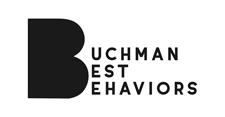Resource Guarding
- Whitney Buchman

- Feb 6, 2020
- 3 min read
In January I asked people on social media to give me their questions regarding pet behaviors. The first of these suggestions I'm going to cover is resource guarding. Resource guarding is when an animal protects something from others. While the most common form of resource guarding is food, it isn't the only thing that an animal can decide to guard. They can also decide locations such as hiding spots under tables or doorways are worth guarding. Often a favored person or attention from any person is worth guarding. The severity of the guarding can range from vocalizations and body posturing to violent attacks. The severity of the behavior can lengthen the amount of time need to adjust the behavior, but the general methodologies stay the same.
The first important thing is not to think of the situation as a challenge. Often, as with many unwanted behaviors, resource guarding behaviors are mistaken for a challenge for dominance. To assess the situation we instead break down the behavior to what is happening before the animal does something (the antecedents), what the does (a behavior such as growling), and what happens after the animal does the behavior (people or other animals back away). Breaking down the behaviors into ABC's (antecedent, behavior, consequence) helps us better target changing the behavior.
Once we identify the true triggers to the behavior we work toward desensitizing the animal to that trigger (stimulus) and/or replacing the unwanted behaviors with new behaviors. To start this process we need to break the cycle. I call it breaking the cycle because long term behaviors are formed by repeating the situation over and over. This creates a self-learning by the animal or environmental learning that the family did not notice or predict. To make progress we need to minimize this cycle from continually repeating. We will need to establish some rules and fundamental behaviors to build toward this goal.
Generally, with this type of situation, we will have the animal choose to go away from the thing they are guarding. By using a target behavior (having the animal touch something way from the food) or a station behavior (having the animal go to a spot away from the food) we give the animal something else to do instead of the behavior. We ask them to leave the food and stay away. We approach the food. If they begin the behavior as we approach we accept that and go to our starting point. As the animal becomes used to the routine we get closer and closer to the food. During this portion, we give the animal rewards (reinforce) for staying at their location.
It is critical that you accept when the animal refuses to let you closer. We are not challenging them and we want them to be comfortable with the procedure. If you threaten, punish, or challenge them during these exercises you could inadvertently justify the behavior to keep things away from that resource. The other issue with punishing or challenging the animal is that you create an arms race scenario. Growling didn't work, time to escalate to snapping. Snapping didn't work, time to escalate to biting. When there is no resistance there is no reason for something to increase their force.
As time goes on and the animal is relaxed in behavior we move the exercise closer and closer to our final goal. Being careful not to push the animal too fast and remaining in our own comfort levels. Predictability is an important factor in behavior modification and if we become less predictable because we are nervous, we reduce our chances for success.
One common mistake when modifying powerful behaviors like resource guarding is not using the correct reinforcement. The value of the reinforcer must be far greater than the thing they are guarding. Otherwise, why would anything want to stop guarding? "I'll give you this $1 bill for that $50 bill." Nothing in nature works that way. In addition, you must make sure that your timing is on point. If the timing is off then the animal cannot predict the outcome and if the animal can't predict the outcome no learning is happening and therefore no change in behavior will happen.
So set yourself up with success to break the cycle by being predictable, go slow, and offer higher reinforcers.






Comments